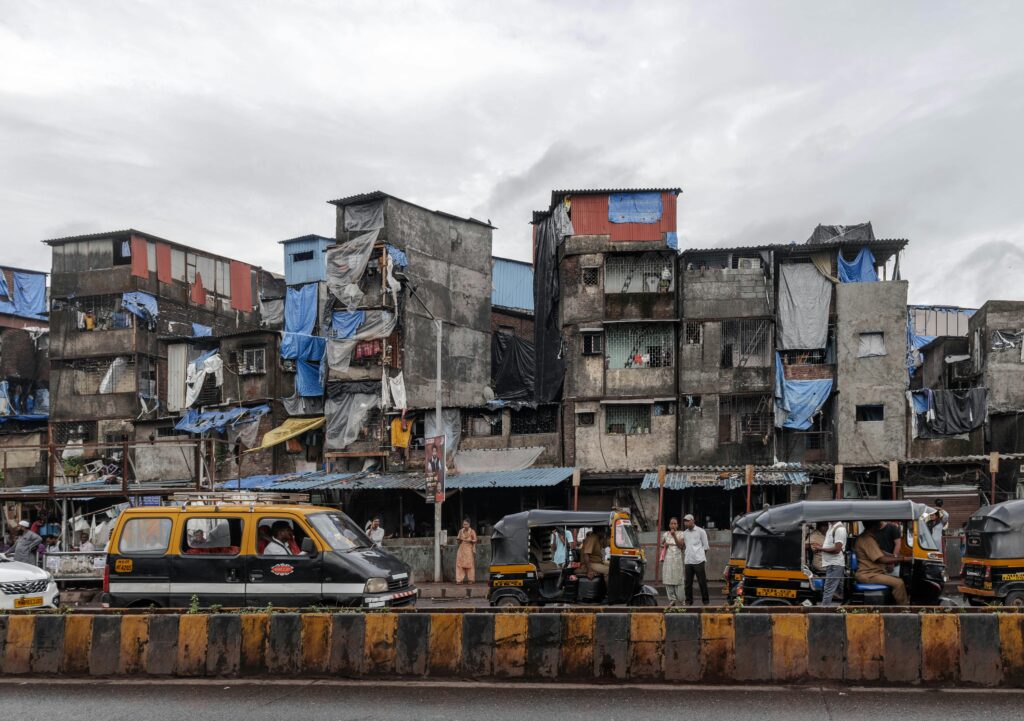Slums in India: Addressing the Housing Crisis

The document titled “Slums in India: Addressing the Housing Crisis” provides an in-depth analysis of the challenges and potential solutions related to slum housing in India. It highlights the significant number of individuals living in slums, estimated to exceed 100 million, and discusses various policies aimed at addressing these issues.
Overview of the Slum Crisis
India is experiencing a rapid urbanization process, with projections indicating that its urban population will nearly double by 2050. This surge is primarily driven by migration from rural areas, leading to an acute shortage of affordable housing. Consequently, slums have emerged as the default living arrangement for many migrants seeking proximity to employment opportunities, despite the associated risks of overcrowding and inadequate sanitation.
The last comprehensive census in 2011 recorded approximately 65 million people residing in slums, but this figure is likely an underestimation due to a lack of updated data. The absence of formal land titles exacerbates the plight of slum dwellers, who live in constant fear of eviction without compensation or alternative housing solutions.
Government Policies and Their Limitations
The Indian government has implemented several initiatives aimed at improving slum conditions, such as the Jawaharlal Nehru National Urban Renewal Mission (JNNURM), Rajiv Awas Yojana (RAY), and Pradhan Mantri Awas Yojana (PMAY). However, these programs have faced criticism for their top-down approach, which often fails to accommodate the specific needs of slum residents. The policies have not effectively addressed the underlying issues of land ownership and security, leading to skepticism among residents regarding their long-term viability.
A notable initiative is the Slum Rehabilitation Scheme (SRS), which aims to provide permanent housing for slum dwellers in exchange for developers receiving land rights. While this program has had some success, it is criticized for lacking adequate oversight and not fully addressing the needs of residents once they are relocated.
Challenges Faced by Slum Dwellers
Living conditions in slums are dire, characterized by inadequate infrastructure, limited access to clean water and sanitation facilities, and high population density. For instance, while many slum households have access to electricity and mobile phones, only a fraction possess basic amenities like in-house toilets. The psychological impact of living under constant threat of eviction further complicates efforts to improve living conditions. Many residents are reluctant to invest in their homes due to fears that they could be demolished at any time.
Recommendations for Improvement
The document emphasizes that sustainable housing crisis solutions must prioritize equitable access to safe housing. It suggests that policies should be more inclusive and consider the voices and needs of slum residents. Recommendations include:
- In-situ Redevelopment: This approach advocates for upgrading existing slum areas rather than relocating residents. It allows communities to remain intact while improving living conditions through better infrastructure and services.
- Private Sector Involvement: Encouraging private developers to participate in affordable housing projects can help bridge the gap between supply and demand for low-income housing. The government can incentivize this involvement through subsidies or tax breaks.
- Community Engagement: Engaging with slum communities during policy formulation can lead to more effective housing crisis solutions tailored to their specific contexts and needs.
Conclusion
Addressing India’s housing crisis requires a multifaceted approach that combines government initiatives with community involvement and private sector participation. As urbanization continues to rise, it is imperative that policies evolve to ensure that all citizens have access to safe, dignified housing. The document underscores that without significant changes in policy design and implementation, millions will continue to live in precarious conditions that undermine their health and well-being.
Also Read: The experience of the Community Organizations Development Institute in Thailand
